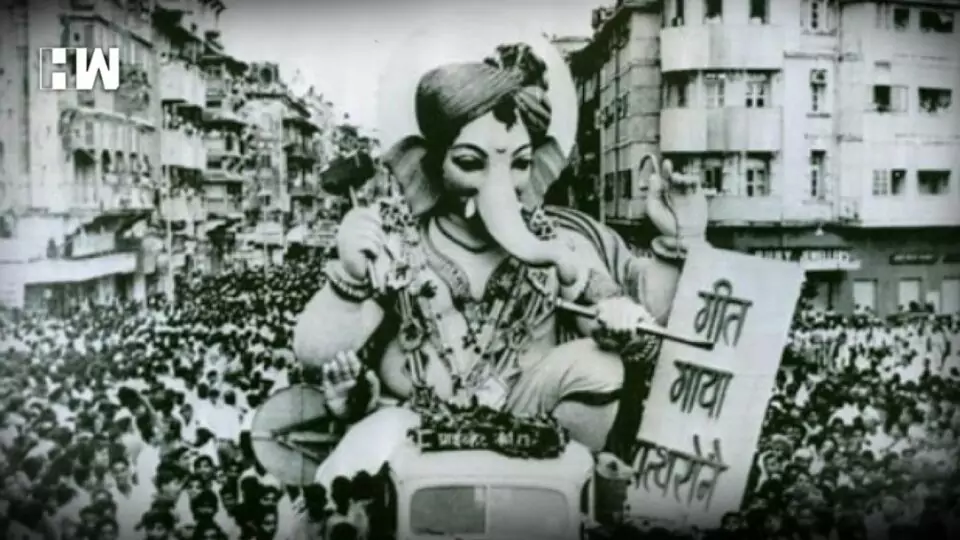This time Ganesh Chaturthi kick starts on August 31(Wednesday). There is a story behind Ganeshotsav becoming a public celebration. On this occasion of Ganesh Chaturthi, let’s tell you the story related to Ganeshotsav, which you may be unaware of.
Ganeshotsav is celebrated every year from Chaturdashi of Shukla Paksha of Bhadrapada month to Anant Chaudas.
While Maharashtra especially Mumbai, is known to host some of the largest Ganesh pujas, the festival is celebrated with pomp and show across the country.
During Ganeshotsav, devotees of Lord Ganesha bring his idols home, perform special poojas for eleven days and after that Ganpati is immersed. There are also large-scale pujas where devotees gather in pandals and temples to celebrate the festival together.
This time Ganesh Chaturthi kick starts on August 31(Wednesday). There is a story behind Ganeshotsav becoming a public celebration. On this occasion of Ganesh Chaturthi, let’s tell you the story related to Ganeshotsav, which you may be unaware of.
Also Read:Shefali Shah Expresses Gratitude As Audience Lauds Her Performance In ‘Delhi Crime 2’
It is said that it was during India’s freedom struggle that Bal Gangadhar Tilak, fondly called as Lokmanya laid the foundation of Ganeshotsav.
During the freedom struggle in the 1890s, Tilak often wondered how to unite countrymen. And he realised that celebrating a puja together can be the way.
In Maharashtra, the Peshwas had long started the tradition of worshipping Ganapati.
Tilak thought, that instead of home, why not celebrate Ganeshotsav at a public place? That way people will come together and a sense of unity will be fostered. So in 1893, the foundation of this great festival was laid.
Bal Gangadhar Tilak is credited to be the man who put up large banners with images of Lord Ganesha in pandals.
He is also believed to start the tradition of immersion of huge Ganesha idols on the eleventh day of the festival. The credit of celebrating Ganeshotsav in public is therefore given to Bal Gangadhar Tilak.
It is said that Bal Gangadhar Tilak had to face a lot of opposition to start Ganeshotsav as a ‘sarbajanink’ puja. But he found support in Lala Lajpat Rai, Bipinchandra Pal, Aurobindo Ghosh, Rajnarayan Bose and Ashwini Kumar Dutt and the Ganeshotsav started. This also boosted Tilak’s popularity. Ganeshotsav became even more popular in the 20th century.
It is believed that as people started coming together, Ganeshotsav at that became a big mass movement of independence, especially in Maharashtra cities like Wardha, Nagpur and Amravati. The British were terrified of the public celebration of Ganeshotsav, and the Rowlatt Committee report also expressed serious concerns about the fact that during Ganeshotsav, groups of youth protested the British rule on the streets and sang songs against the British government. Ganeshotsav created quite a flutter and perturbed the Raj.
As time passed, Ganeshotsav became hugely popular. Today, the festival is celebrated across the country, with a lot of grandeur. Apart from Maharashtra, Ganesh Chaturthi is celebrated with great pomp in all the states including Madhya Pradesh, Rajasthan, Karnataka, Tamil Nadu, and West Bengal among others. Lord Ganesha is worshipped in the form of Mangalmurti. By breaking the shackles of caste, all the people participate in the worship and celebration of the lord.
As an independent media platform, we do not take advertisements from governments and corporate houses. It is you, our readers, who have supported us on our journey to do honest and unbiased journalism. Please contribute, so that we can continue to do the same in future.

